Having a pet rodent such as a rat or a mouse can be considered an unorthodox choice instead of going for a typical puppy or kitten.
And while pets such as mice require minimal care and supervision, that may not be the case when it comes to caring for an ill or dying pet.
But how do you exactly tell if a mouse is dying?
Much like any other pet, owners would want to provide the best possible care available to ensure that their precious mouse is well and healthy.
To give you a better idea, here is a quick overview of common mouse illnesses and how to tell if your pet mouse is dying.
How To Tell If A Mouse Is Dying?
Some of the most common signs of a dying mouse include lethargy, appetite and weight loss, withdrawal from touch or attention, and other physical manifestations of a disease. But, they’re good at hiding their illness, hence, we should be alert to notice even the subtlest behavior changes.
What to expect when a mouse’s dying
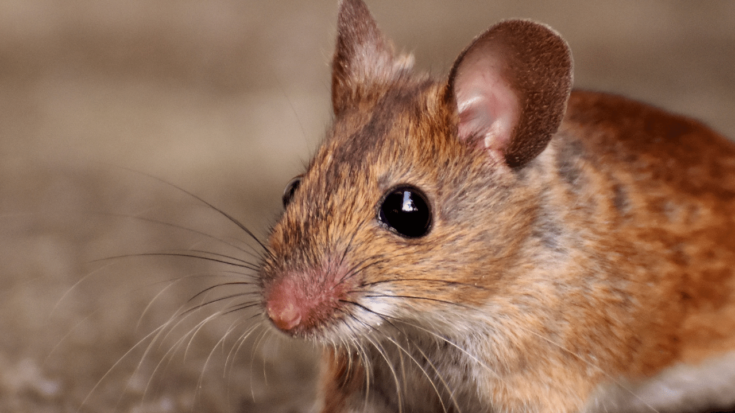
Lethargy and withdrawal from touch can be signs of a dying mouse
Your pet mouse can show signs and symptoms of illnesses before dying.
Lethargy and withdrawal from touch in a normally energetic mouse can mean that they are in pain and unwell.
The apparent loss of appetite can also lead to malnutrition and dehydration that is dangerous for the mouse’s well-being.
But aside from knowing what the signs of a dying mouse are, a responsible owner should first and foremost know the common diseases and illnesses that can possibly harm their pet.
A pet mouse has a relatively short lifespan of 2 to 3 years. But aside from age, unforeseen illnesses can cause your pet mouse to succumb earlier than expected.
Mice are known to be prone to illnesses and diseases – a characteristic that can make their short lifespan even shorter.
So for mouse owners, here are some of the most common illnesses and diseases that you should look out for:
Diarrhea
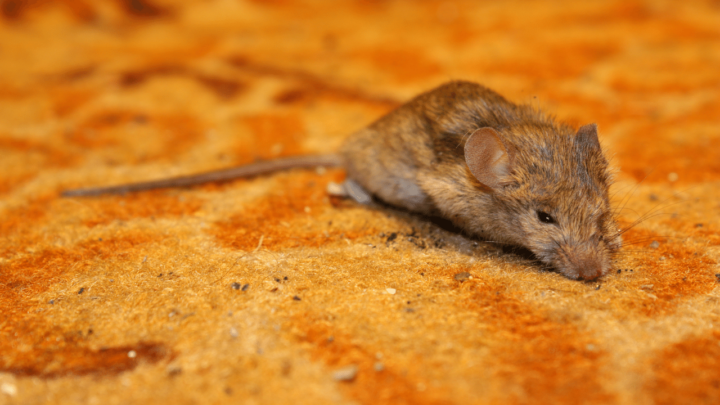
Extended diarrhea of 8 to 12 hours and more is not a good sign in mice
Rodents, such as your pet mice, are prone to digestive system diseases such as diarrhea.
Diarrhea in mice is often caused by overindulgence of food, salmonella, or stress.
And while diarrhea in itself is not that dangerous for your pet mouse, diarrhea lasting for 8 to 12 hours can cause dehydration that can be detrimental to the mouse’s health.
Tumors
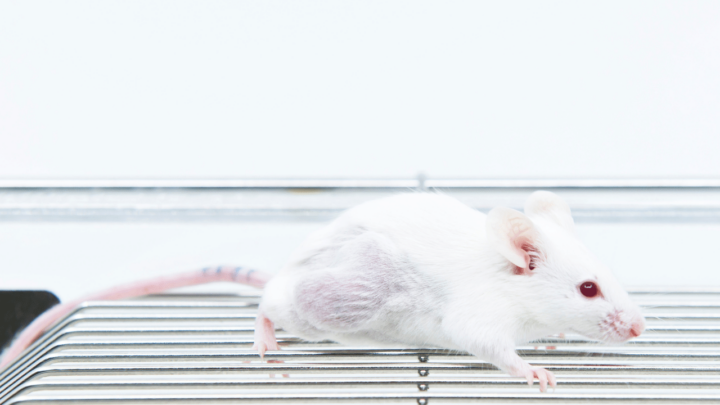
If you feel a lump on your mouse it needs to be checked by a vet
Tumors can either be benign or cancerous fatty lumps commonly found on the sides or rear of an old mouse or feeder mice.
If you observe or feel a lump on your pet mouse, it is important to have them checked as soon as possible to see if it is cancerous or not.
If benign, veterinarians wouldn’t pay as much attention to it and leave it be. However, a cancerous tumor on a tiny mouse offers little to no survival as removing it also poses fatal risks of stress and infection.
Upper Respiratory Infection
An upper respiratory infection (URI) in a mouse can be a fatal illness if not treated quickly.
Typically characterized by labored breathing, lethargy, loss of appetite, watery eyes, and shaking, a URI in mice can easily be caused by filthy bedding, dusty sawdust, or a dirty or damp enclosure.
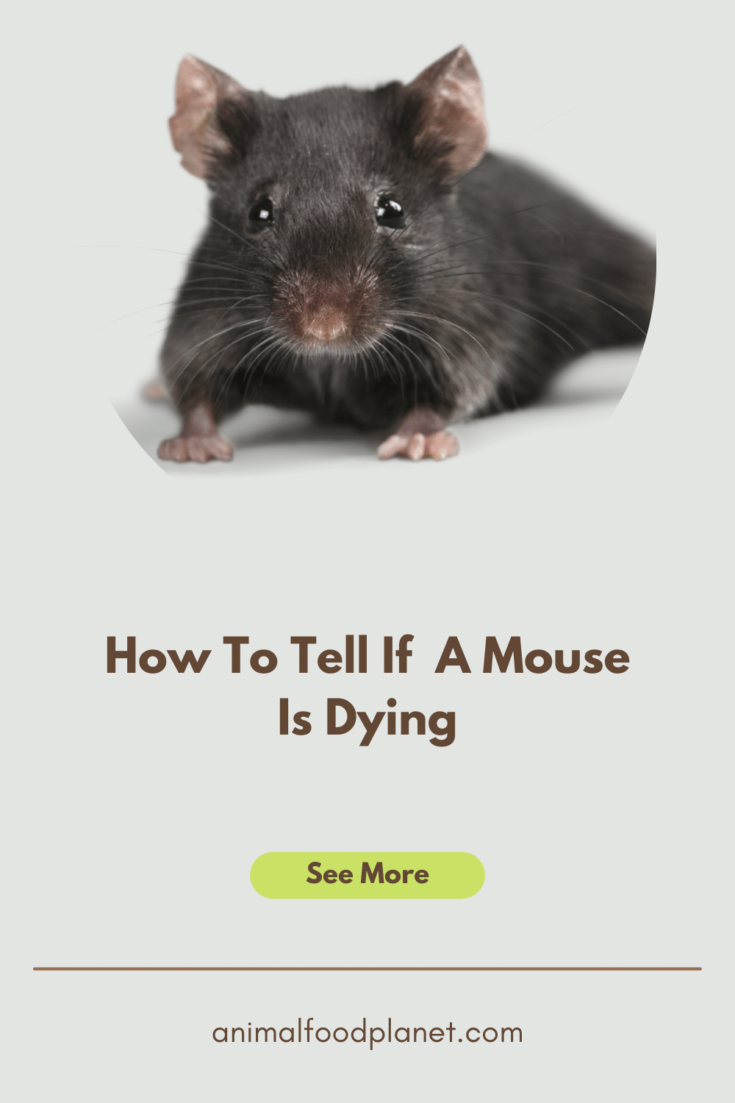
How To Tell If A Mouse Is Dying
Tell-tale signs that your mouse’s in pain
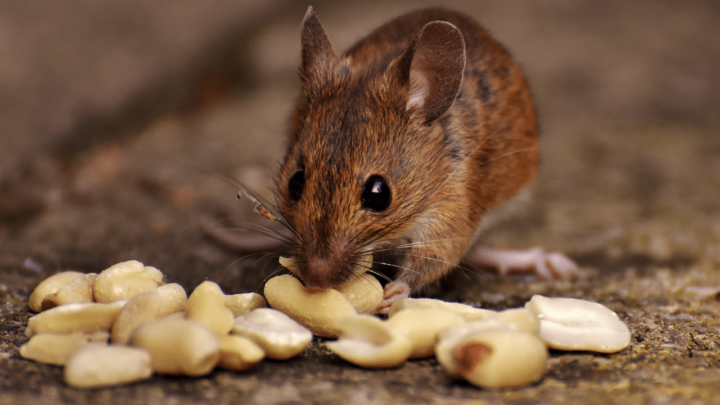
Baby mice are known to shy away from showing and demonstrating pain
Aside from illnesses and diseases, pet mice are also known to shy away from showing their pain.
Instead of shrieking or whining when hurt, our mouse babies can continue to move and live normally despite feeling pain from injury or illness.
Taking this into consideration, it is important for pet owners to know and notice the slightest signs of pain from their pets so that they could respond according to their pet’s needs.
Side-sucking is one of the most noticeable signs that a mouse is in immense pain.
Side-sucking refers to the mouse’s tendency to breathe from their abdomen due to severe pain or a serious respiratory disease.
Side-sucking can also be accompanied by labored breathing and mouth gasping, indicating pain as well as the lack of oxygen.
Aside from side-sucking, there are other physical and behavioral signs of pain in mice that you can look out for.
Physical manifestations of pain in mice include a hunched-up posture, apparent discomfort when moving and handling, a tight jaw, narrowed eyes, and flat and pulled-down ears.
On the other hand, changes in personality and behavior such as biting, restlessness, and lethargy can also be considered as signs that your pet mouse is uncomfortable and in immense pain.
Mice, much like humans, can show facial expressions that can help distinguish levels of their pain.
The mouse grimace scale is a scientifically produced tool that mouse owners can use to be familiar with the different changes and notable signs that the mouse is in discomfort and in pain.
Frequently Asked Questions About Dying Mice
Do dying mice squeak?
A mouse’s squeak can have various reasons. And while a mouse dying of old age can pass peacefully in its sleep, a dying mouse can squeak and squeal prior to its death often indicating immense pain and fear.
How to comfort a dying mouse?
Considering the relatively short lifespan of a pet mouse, it is inevitable for owners to come across a dying pet. To comfort a dying mouse, you can help by setting up a clean, quiet, and comfortable place to stay, giving them lots of attention, as well as providing pain management medication until they pass.
How to remove a dead mouse’s smell?
Even after removing the dead mouse from your house, the smell might stick a bit longer especially if it is in an enclosed place or room. To get rid of the dead mouse smell, a simple solution is to spray a mixture made with 10% bleach and 90% water generously over the spot where the mouse died and throughout the room. You can also use odor-neutralizing chemicals to get rid of the smell and clear the room faster.
Conclusion
Considering that pet mice are good at covering up their illness and pain, finding out if your pet mouse is ill or in pain can be a challenge especially for new and inexperienced owners.
Regardless, it is important for mouse owners to be meticulous and observant enough to notice the slightest change in their pet’s appearance and behavior that may indicate pain or an underlying disease.
Always be ready to consult professionals and have your pets regularly checked to ensure that they are always well and healthy.


